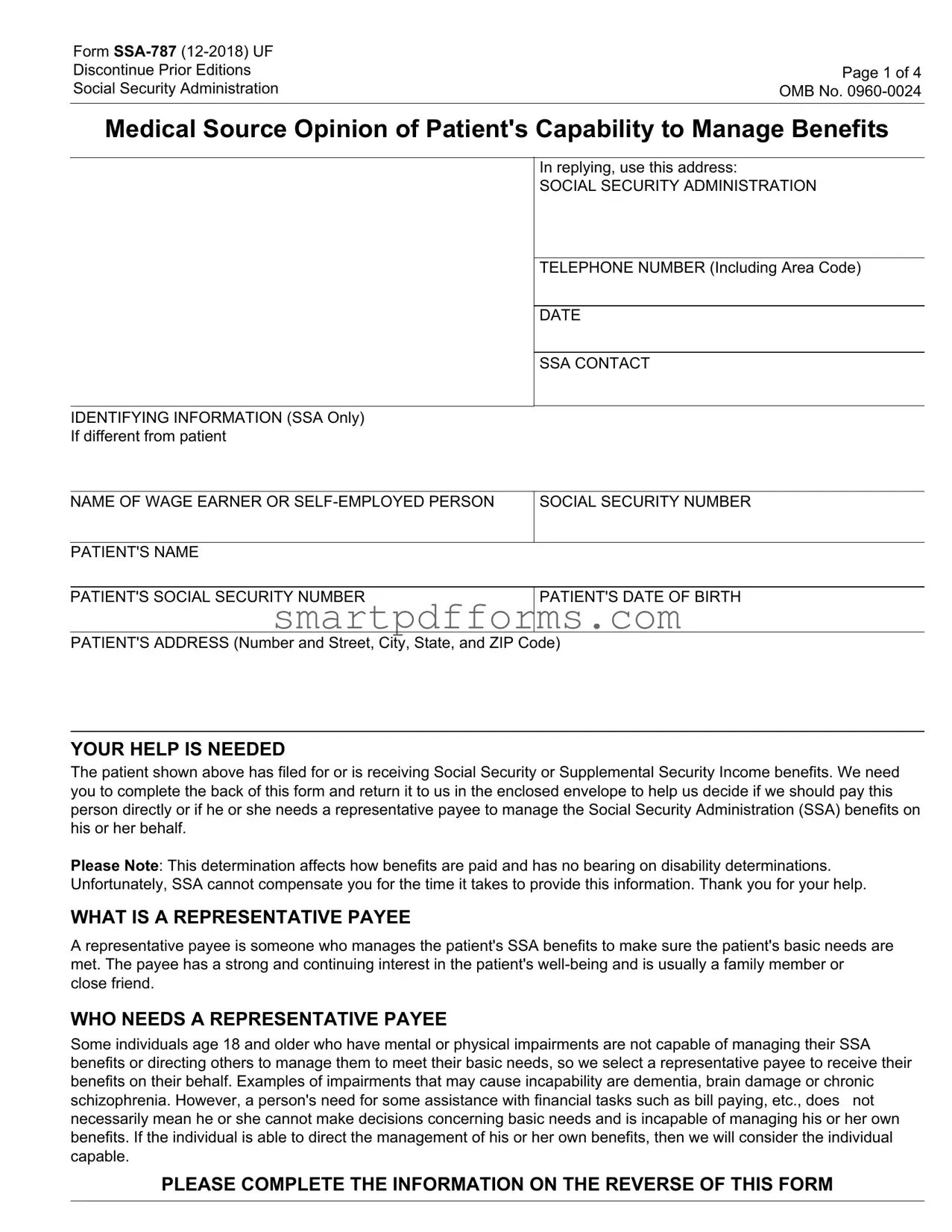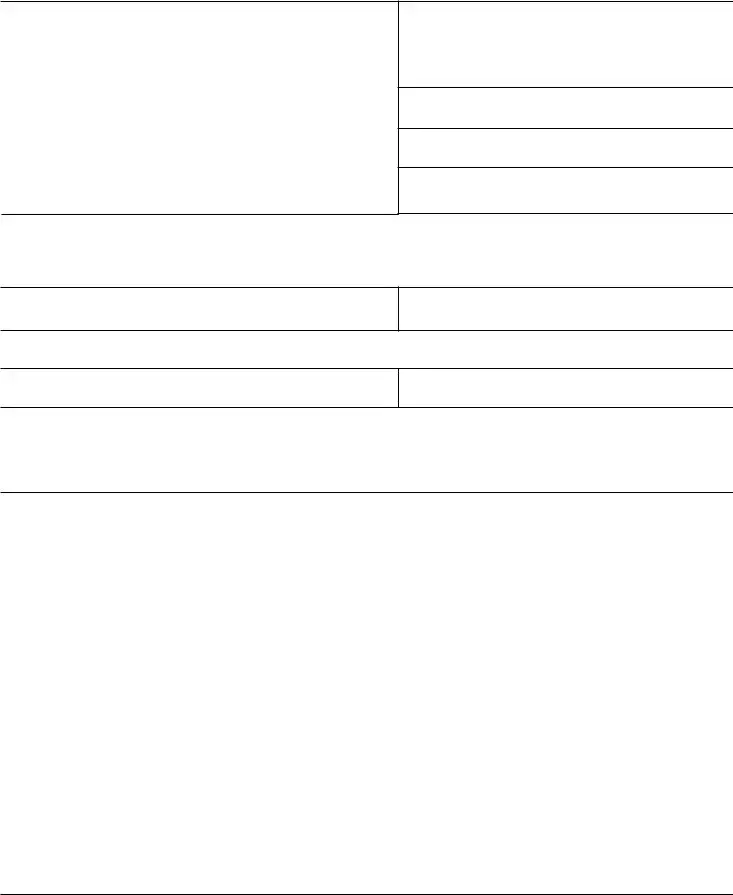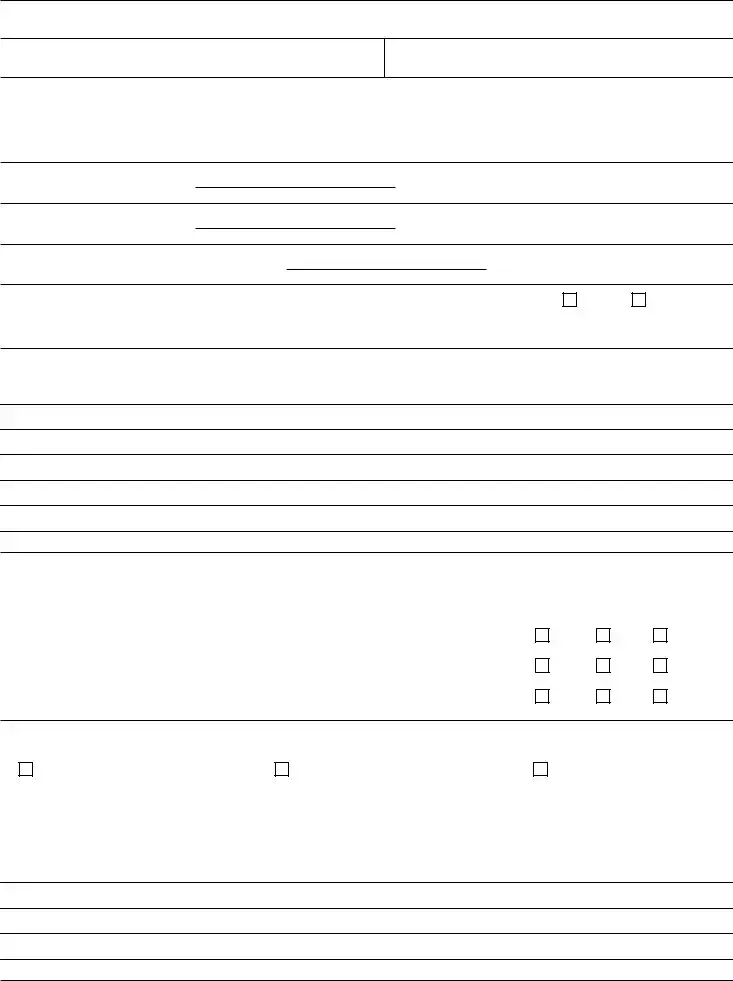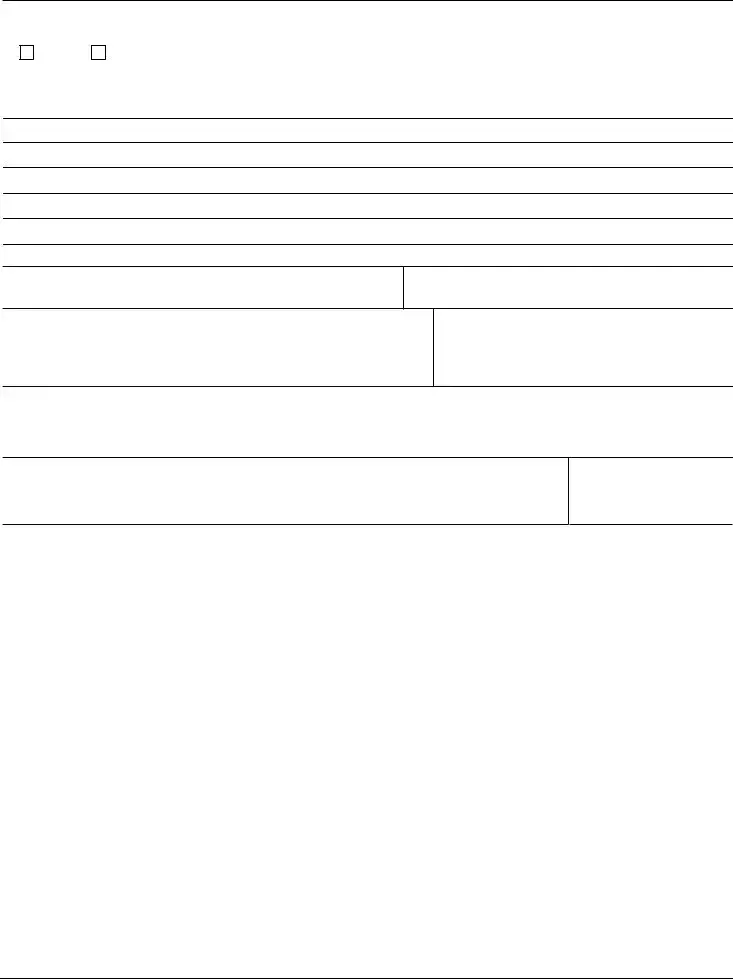Form SSA-787 (12-2018) UF |
|
Discontinue Prior Editions |
Page 1 of 4 |
Social Security Administration |
OMB No. 0960-0024 |
|
|
Medical Source Opinion of Patient's Capability to Manage Benefits
IDENTIFYING INFORMATION (SSA Only) If different from patient
In replying, use this address:
SOCIAL SECURITY ADMINISTRATION
TELEPHONE NUMBER (Including Area Code)
DATE
SSA CONTACT
NAME OF WAGE EARNER OR SELF-EMPLOYED PERSON
PATIENT'S SOCIAL SECURITY NUMBER
PATIENT'S ADDRESS (Number and Street, City, State, and ZIP Code)
YOUR HELP IS NEEDED
The patient shown above has filed for or is receiving Social Security or Supplemental Security Income benefits. We need you to complete the back of this form and return it to us in the enclosed envelope to help us decide if we should pay this person directly or if he or she needs a representative payee to manage the Social Security Administration (SSA) benefits on his or her behalf.
Please Note: This determination affects how benefits are paid and has no bearing on disability determinations. Unfortunately, SSA cannot compensate you for the time it takes to provide this information. Thank you for your help.
WHAT IS A REPRESENTATIVE PAYEE
A representative payee is someone who manages the patient's SSA benefits to make sure the patient's basic needs are met. The payee has a strong and continuing interest in the patient's well-being and is usually a family member or close friend.
WHO NEEDS A REPRESENTATIVE PAYEE
Some individuals age 18 and older who have mental or physical impairments are not capable of managing their SSA benefits or directing others to manage them to meet their basic needs, so we select a representative payee to receive their benefits on their behalf. Examples of impairments that may cause incapability are dementia, brain damage or chronic schizophrenia. However, a person's need for some assistance with financial tasks such as bill paying, etc., does not necessarily mean he or she cannot make decisions concerning basic needs and is incapable of managing his or her own benefits. If the individual is able to direct the management of his or her own benefits, then we will consider the individual capable.
PLEASE COMPLETE THE INFORMATION ON THE REVERSE OF THIS FORM
Form SSA-787 (12-2018) UF |
Page 2 of 4 |
PATIENT'S NAME
PATIENT'S SOCIAL SECURITY NUMBER
PATIENT'S ADDRESS (Number and Street, City, State, and ZIP Code)
1.Date you first saw the patient
2.Date you last saw the patient
3.How many times have you seen this patient?
4.Are you able to assess the patient's ability to manage or direct the management of funds? If no, please skip the remaining questions and sign and date the form.
5.What is the basis for your assessment (e.g. observation, medical records, diagnostic tests, patient's self-report, family member's report)?
Note: Please keep in mind in responding to the following questions that the actual performance of the patient, when known, is usually the best indicator of the patient's abilities.
6.Does the patient:
•Have a general understanding of his or her finances (i.e., income, assets, expenses)?
•Have sufficient ability to handle a checking/savings account?
•Have sufficient ability to pay bills in a timely manner?
7. Can the patient successfully manage or direct the management of funds to meet basic needs (e.g. food, clothing,
shelter)?
Yes
If "Yes," please provide a brief summary of the findings that led to this conclusion, and complete question 8. Please also sign and date the form.
No
If "No," please provide a brief summary of the findings that led to this conclusion, and complete question 8. Please also sign and date the form.
Unsure
"Unsure," please explain and sign and date the form.
Form SSA-787 (12-2018) UF |
Page 3 of 4 |
8.Do you expect the patient to be able to manage or direct the management of his or her benefits in the future (e.g. the patient is temporarily unconscious)?
Please explain your answer.
NAME OF MEDICAL SOURCE (Please print.)
ADDRESS (Number and Street, City, State, and ZIP Code)
TELEPHONE NUMBER (Include Area Code)
I declare under penalty of perjury that I have examined all the information on this form, and on any accompanying statements or forms, and it is true and correct to the best of my knowledge. I understand that anyone who knowingly gives a false statement about a material fact in this information, or causes someone else to do so, commits a crime and may be subject to a fine or imprisonment.
SIGNATURE OF MEDICAL SOURCE
Form SSA-787 (12-2018) UF |
Page 4 of 4 |
Privacy Act Statement
Collection and Use of Personal Information
Sections 205, 807, and 1631(a) of the Social Security Act, as amended, allow us to collect this information. Furnishing us this information is voluntary. However, failing to provide all or part of the information may prevent us from making a determination regarding the beneficiary’s capability or inability to handle his or her own benefits.
We will use the information to determine the beneficiary’s need for a representative payee. We may also share your information for the following purposes, called routine uses:
•To Federal, State, or local agencies for administering cash or non-cash income maintenance or health maintenance programs; and
•To contractors and other Federal agencies, as necessary, for the purpose of assisting the Social Security Administration in the efficient administration of its programs.
In addition, we may share this information in accordance with the Privacy Act and other Federal laws. For example, where authorized, we may use and disclose this information in computer matching programs, in which our records are compared with other records to establish or verify a person’s eligibility for Federal benefit programs and for repayment of incorrect or delinquent debts under these programs.
A list of additional routine uses is available in our Privacy Act System of Records Notices (SORN)
60-0089, entitled Claims Folders Systems, as published in the Federal Register (FR) on April 1, 2003, at 68 FR 15784, and 60-0222, entitled Master Representative Payee File, as published in the FR on April 22, 2013, at 78 FR 23811. Additional information, and a full listing of all our SORNs, is available on our website at www.ssa.gov/privacy.
Paperwork Reduction Act Statement - This information collection meets the requirements of
44 U.S.C. § 3507, as amended by section 2 of the Paperwork Reduction Act of 1995. You do not need to answer these questions unless we display a valid Office of Management and Budget control number. We estimate that it will take about 20 minutes to read the instructions, gather the facts, and answer the questions. SEND OR BRING THE COMPLETED FORM TO YOUR LOCAL SOCIAL
SECURITY OFFICE. You can find your local Social Security office through SSA’s website at www.socialsecurity.gov. Offices are also listed under U.S. Government agencies in your telephone directory or you may call Social Security at 1-800-772-1213 (TTY 1-800-325-0778). You may send comments on our time estimate above to: SSA, 6401 Security Blvd, Baltimore, MD 21235-6401. Send only comments relating to our time estimate to this address, not the completed form.




